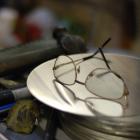Ordered an engraved quaich as a gift and the service team went out of their way to make sure it arrived in time. Excellent, personal, and swift service with beautifully engraved quaich.
After a slightly tricky time negotiating the Etsy site, I was astonished to receive the quaich by return - beautifully engraved and a perfect wedding present! Thank you so much for expediting my order - I am truly delighted !
I bought this quaich as a wedding gift. A lovely keepsake to remind the happy couple of their special day. Engraving was beautifully done and communicating with seller was easy and straightforward. Delivered within a few days. Excellent service. Five stars from me.
Well done! Splendid lettering and delightful artwork. My friend will treasure his very special quaich for the rest of his life.

